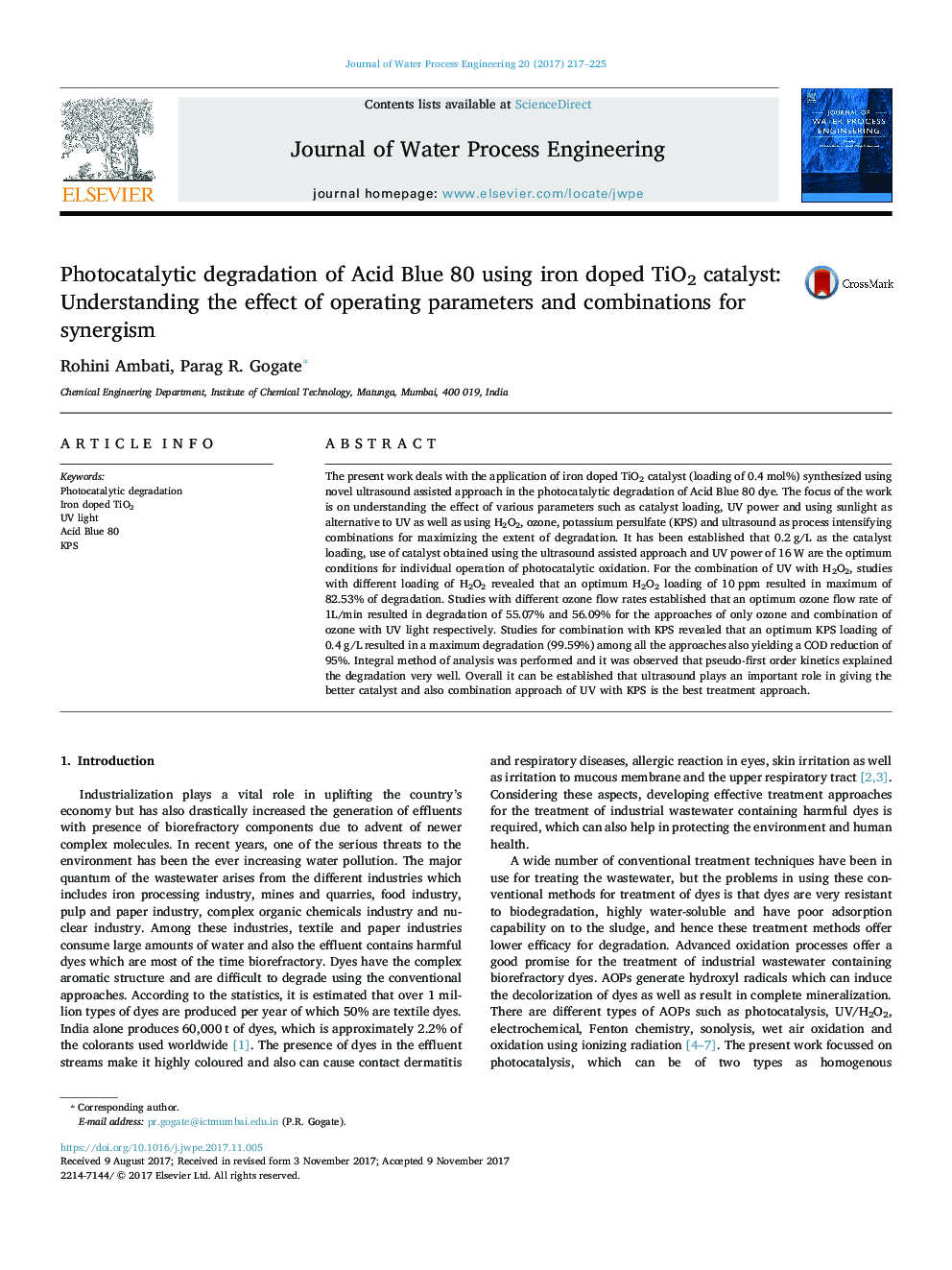| Article ID | Journal | Published Year | Pages | File Type |
|---|---|---|---|---|
| 6672063 | Journal of Water Process Engineering | 2017 | 9 Pages |
Abstract
The present work deals with the application of iron doped TiO2 catalyst (loading of 0.4 mol%) synthesized using novel ultrasound assisted approach in the photocatalytic degradation of Acid Blue 80 dye. The focus of the work is on understanding the effect of various parameters such as catalyst loading, UV power and using sunlight as alternative to UV as well as using H2O2, ozone, potassium persulfate (KPS) and ultrasound as process intensifying combinations for maximizing the extent of degradation. It has been established that 0.2Â g/L as the catalyst loading, use of catalyst obtained using the ultrasound assisted approach and UV power of 16Â W are the optimum conditions for individual operation of photocatalytic oxidation. For the combination of UV with H2O2, studies with different loading of H2O2 revealed that an optimum H2O2 loading of 10Â ppm resulted in maximum of 82.53% of degradation. Studies with different ozone flow rates established that an optimum ozone flow rate of 1L/min resulted in degradation of 55.07% and 56.09% for the approaches of only ozone and combination of ozone with UV light respectively. Studies for combination with KPS revealed that an optimum KPS loading of 0.4Â g/L resulted in a maximum degradation (99.59%) among all the approaches also yielding a COD reduction of 95%. Integral method of analysis was performed and it was observed that pseudo-first order kinetics explained the degradation very well. Overall it can be established that ultrasound plays an important role in giving the better catalyst and also combination approach of UV with KPS is the best treatment approach.
Related Topics
Physical Sciences and Engineering
Chemical Engineering
Chemical Engineering (General)
Authors
Rohini Ambati, Parag R. Gogate,
